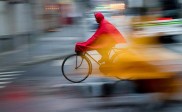Coast photography Tips and Techniques
Coast photography is a type of landscape photography concerned with the junction between the sea and the dry land. Coasts and sea shores have always been a place of predilection for many photographers, as they can provide them with boundless possibilities. This article will show you some of these possibilities and will explain the way to achieve great coast photography.
Having beautiful coastal scenery in front of your eyes isn’t enough for capturing the beauty of such a view. You need to use the appropriate gear and the appropriate technique in order to concertize the vision which lies within your mind.
Coast Photography Gear:
Like in any other photography field, all you really need for coast photography is a camera. But, some other gear and equipment will give you more freedom and will make photographing in certain situations easier.
-Camera: This will be preferably a DSLR allowing you to use different lenses and different accessories, such as filters.
-Tripod: A sturdy and solid tripod works best for coast photography, as it tends to be windy around seashores and coasts. Also, consider bringing along some sand bags to weight down the tripod. A monopod can also be handy in situations where it’s too cluttered to use a tripod.
-Filters: Filters you might need in coast photography include:
• UV filter: This is basically used for protecting the lens from any objects that might touch its glass element, like sand, water, or fingers. The UV filters needs to be removed when using another filter. Stacking filters is not a wise idea.
• Polarizing filter: A polarizing filter will be a great tool for capturing vivid colors and for getting rid of unwanted water reflections
• ND filter: An ND filter is most useful when you want to do coast photography using a relatively long exposure or wide aperture, in broad day light. The ND filter will decrease the amount of light entering the camera resulting in slow shutter speeds which are necessary for making moving water look smooth and silky. You can also use a graduated ND filter which will block the light only on a part of the frame leaving the other part untouched. This kind of filter is usually used when taking photos of sunsets or when dealing with a scenery which requires multiple exposures.
-Other accessories: You may need in certain instances, a camera rain coat to protect it from water that might be splashing from sea waves. You can also use a lens hood to provide further protection to your camera, and a flashlight to find your way around when shooting at night.

Photo by Stuck in Customs
Coast Photography Shooting Tips:
-Focus on a specific element:

Photo by Garry
While the subject in coast photography is generally the sea shore, or the coast itself, photographing it without drawing the eye to a more specific subject will lead to photos which are dull and lacking interest. Try to find an element to emphasize within your composition. It can be a pile of rocks, a boat in the sea, or a log on a beach. Whatever the element, frame it in a way to make it prominent in the composition.
-Shoot the water in its different aspects:

Photo by midlander1231
Water is one of the most important elements in coast photography. You have different ways at your hand in which you can use the water. Depending on the effect you want to produce on the viewer, you can choose from either making the water look silky, or you can freeze its movement to make the splashes visible. You can also, use the water as a reflective surface to capture reflections of a cloudy sky or a boat, thus producing beautiful mirror effects. Use the ND filter to be able to use shutter speeds slow enough to capture the silky effect of the water. Generally you will need an exposure time of ½ second or slower to achieve such an effect. To freeze the water splashing in the air after smashing into rocks, consider dialing a shutter speed of 1/500 second or higher, especially, if you are close to the action.
-Lighting and Composition in Coast Photography :

Photo by Mike Chen aka Metalman
Coast photography being primarily a type of landscape photography, light and composition are among the crucial things to master. The best lighting conditions for such a subject are usually around sunrise and sunset, when the sun is still low in the sky which will produce soft shadows, and beautiful tones. Also, rainy days and stormy weather can provide stunning cloud formations which will result in powerful photos. So, if it’s raining, don’t stay home and think of the photos you could have been taking. Grab a rain coat and head to the nearest beach.
Don’t forget, basics such as keeping the horizon line straight and using the rule of thirds and leading lines when composing for coast photography.
Following are some more amazing coastal photos for your inspiration.

Photo by Ravages

Photo by WarzauWynn

Photo by slimmer_jimmer

Photo by midlander1231

Photo by davide

Photo by midlander1231
Subscribe to our RSS feed OR Follow us on twitter
I hope you find these coast photography tips and techniques helpful.




great advice … awesome share !!! thanks